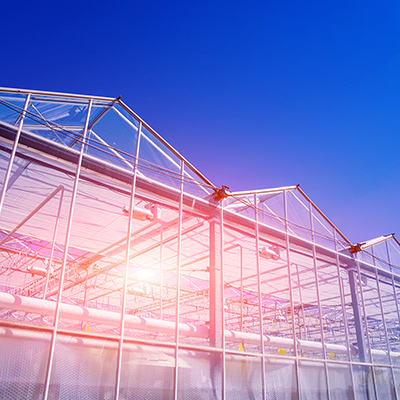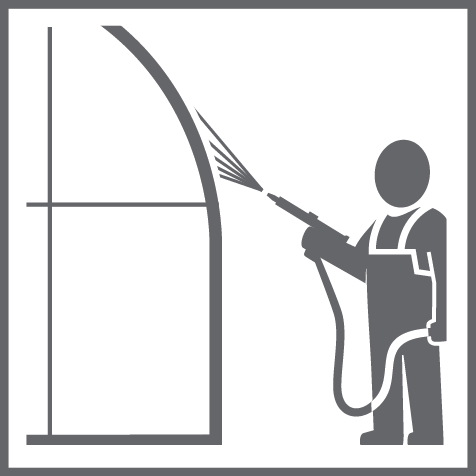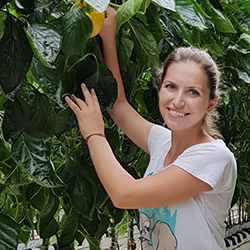“We deal with lots of growers and we see the switch from field grown production to protected cultivation first hand” says Richard Haynes, national account manager for Elders Ltd. “The switch is being driven by supermarket demand for more uniformity and consistent supply. Land is also being taken over for housing, so growers need to produce more from less,” he says.
Elders Ltd., headquartered in Adelaide, provides a wide range of agricultural supplies and innovative services to all those working in the agricultural and horticultural industries. Since last year Elders Ltd. is also the sole importer of Sudlac shading products in Australia.
These are helping to reduce the temperature in the greenhouse, which is often in the low 30s during the Australian summer although it can peak in the 40s from December to February.
“In the past, if you weren’t able to shade the greenhouse from the sun the greenhouse became far too warm. Without any protection, the plants become stressed and stop flowering at the top. Also, fruits that have already formed suffer from sunburn and aren’t marketable. This leads to spikes and lulls in product availability. By going over to high tech production, including the use of coatings, plants grow and flower consistently and produce edible fruit,” says Haynes. This allows growers to even out the fluctuations and provide marketable fruit every day.
All situations
Sudlac is a well-known brand In Australia and growers that use the company’s shading products know that they work well, says Haynes. “Last season we invited other growers to try it, so we are hoping that they will include it in their entire program this year.”
Elders Ltd. offers a wide range of shading products from the basic Sombrero Liquid to Eclipse LD and Transpar for high tech growers. “We have enough products to cover all situations,” he says. Eclipse LD protects crops from light and heat while Transpar reflects heat and at the same time allows PAR light to enter the greenhouse. At the end of the season, a grower can choose the precise moment at which to remove Eclipse LD or Transpar by using the product Topclear.
Good business opportunity
Elders Ltd. was introduced to Sudlac during Fruit Logistica 2017. “We were lucky; It was the right business opportunity at the right time. Sudlac was looking for a distributor and we felt that its range of products perfectly complemented our existing business. It gives us another good reason to visit our growers.”
Most greenhouses, which are mainly producing cucumbers and tomatoes and some eggplants, are close to Adelaide in South Australia. However, the sector is also well established in Victoria and New South Wales. It currently includes about 480 hectares of high tech glasshouses and 1400 hectares of low tech plastic covered houses. Although clients vary in size and growing techniques, their common aim is to maximize performance and improve financial returns, says Haynes.
Growers first tend to move from field production to plastic greenhouses and once they have experience of this and see the benefits they develop further into high tech glasshouses. “They realize that production is much more efficient, and they use much less energy and water. As a result, they are producing more for less,” he says.
“We are very pleased to be working with Sudlac. They are very supportive and provide plenty of technical information and background knowledge.









